A little bird told me this week that you are all rather interested in the sea snakes that we come across on the beaches here whilst observing shorebirds. They are usually washed up after rough weather and are often injured/sick or pregnant. Where it is possible we make every effort to return them to the sea, even if it does mean a rather long walk when the tide is out. Sometimes it is too late, as they are deceased and Brahminy Kites and White-bellied Sea-Eagles usually take advantage of the situation. By returning them to the sea we do give them a chance and if they do not survive then they are in an environment where they will be naturally “recycled”. The most common species we see are the Stoke’s Sea Snake Astrotia stokesii, Dubois’ Sea Snake Aipysurus duboisii and the Olive Sea Snake Aipysurus laevis. The Olive Sea Snake is the one that varies the most in it’s colouration. I hope you enjoy these photos!
Olive Sea Snake that has had a dog visit it on the beach
Olive Sea Snake with obvious bulge
Stoke’s Sea Snake
Stoke’s Sea Snake with wounds
Dubois’ Sea Snake
Dubois’ Sea Snake being returned to the sea!
Sometimes we come across other unfortunate creatures that have got caught up in the tide and need some help, so we also do what we can.
Carpet Shark washed up
Carpet shark being returned to the sea
I hope you have enjoyed this little insight into our varied wildlife here in the north of Australia.

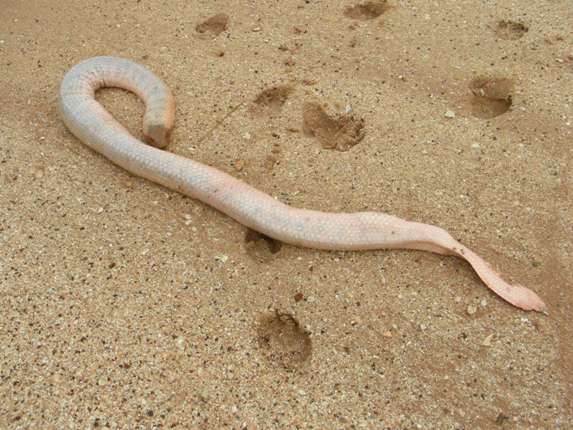
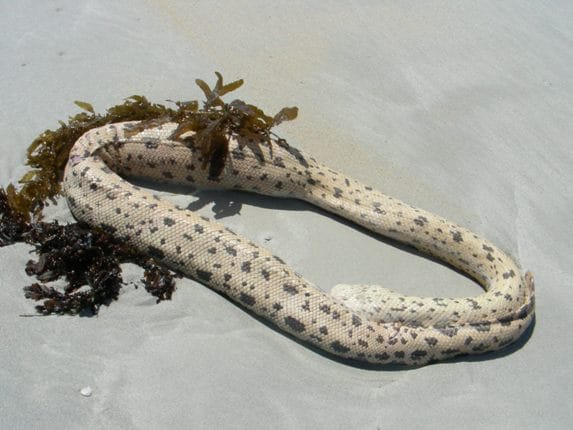
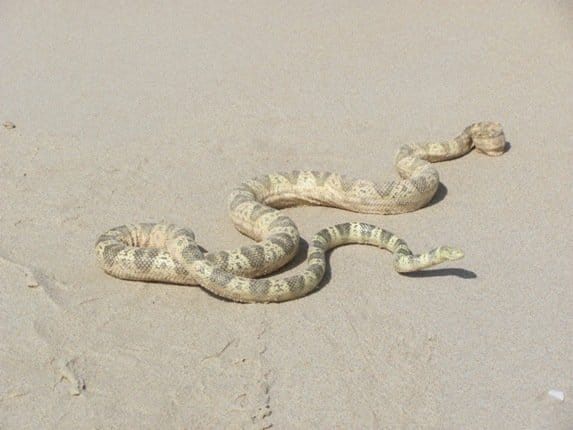
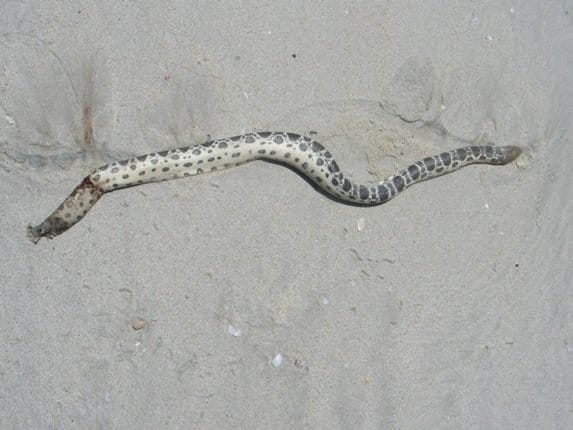
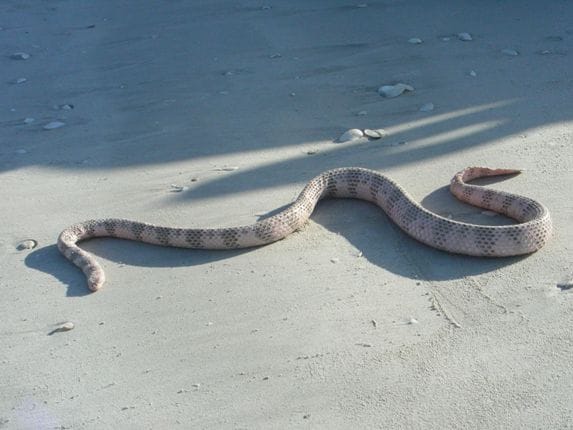
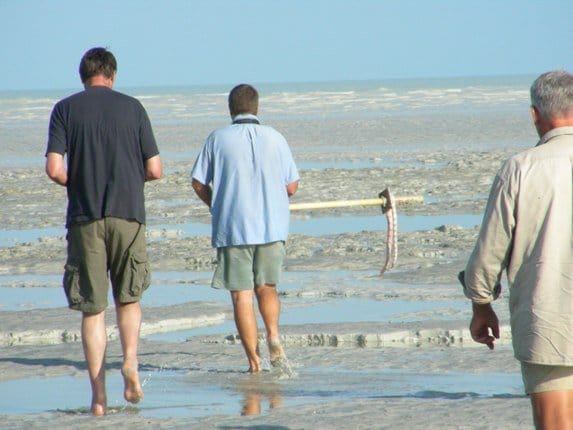
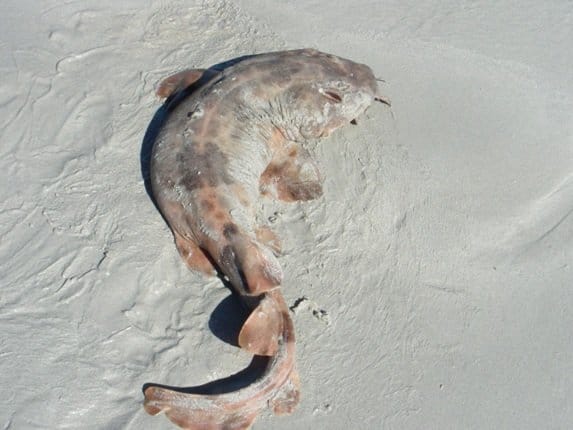
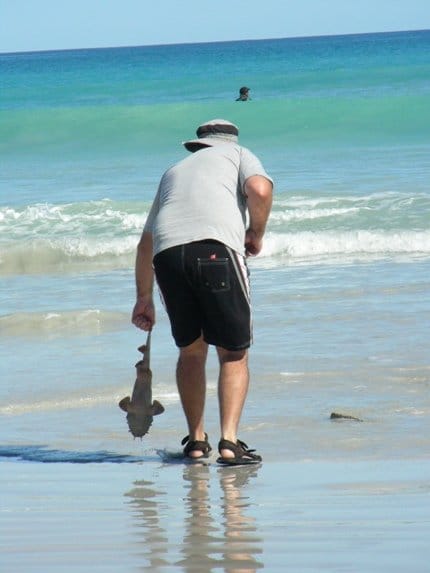










Awesome post Clare. Seriously cool critters. Do you think that little wobbie would survive? I’ve heard they’re surprisingly hardy about being out of water for a bit but in that sun I’d imagine they struggle pretty quickly.
What amazing snakes and great photos. I loved your post, I have to visit Australia someday. It seems like there is great diversity in this continent.
Fascinating post, and some interesting pictures. Thanks!
Speaking of pregnant snakes, do sea snakes lay their eggs ashore like sea turtles or do they keep them internally until the young are ready to hatch/ be born, like some sharks?
@ tai haku-it was early in the morning and we never found it washed up again, so I think it survived.
@ Renato-yes…plenty of diversity here!
@ Carrie-the Sea Snakes have their young-small snakes-at sea, so they are in the sea their whole lives unless they get washed up in a storm and then we try and rescue them. They are relatively helpless and immobile on land.
cool news on the shark; I think an early morning beach walk would be an addictive habit if I were in your area!
@carrie – just to add to Clare and/or Grant’s answer, if you are at sea in south east asia you may also see snakes which are sea kraits rather than the sea snakes shown here (you can see one on my blog here: http://tai-haku.blogspot.com/2007/07/more-snakes.html). These do lay eggs on land and are (reasonably) mobile once they hit the beach.
YES!!! (applause)
And I see that this is a long, long stick to carry the snake. Do you always carry one with you for the snakes or was that just a particularly nice stick you found at the beach by chance?
And did you follow the dog tracks to find that – behind some bushes on the ground – the Brahminy Kites and White-bellied Sea-Eagles had taken “advantage of the situation”? 😉
@ Jochen-we found that long pole (a float) on the beach, so very useful! We had collected it to remove from the beach, but it was very useful for sea snakes. We were supposed to be counting shorebirds, but stopped for sea snakes! The dog tracks did not lead to any birds, but the wounded snake had a Brahminy Kite on it until I came along on my bike and took a photo.
@Clare. I would be terribly distracted from counting shorebirds by sea snakes. They are very neat creatures. And that was one lucky dog, ey? I absolutely envy you, in a positive way.
First snake is Aipysurus laevis (Olive Sea Snake) second is Hydrophis stokesii (Stoke’s Sea Snake), third is Hydrophis elegans (Elegant Sea Snake), fourth is Stoke’s Sea Snake and fifth is Hydrophis peronii (Horned Sea Snake)